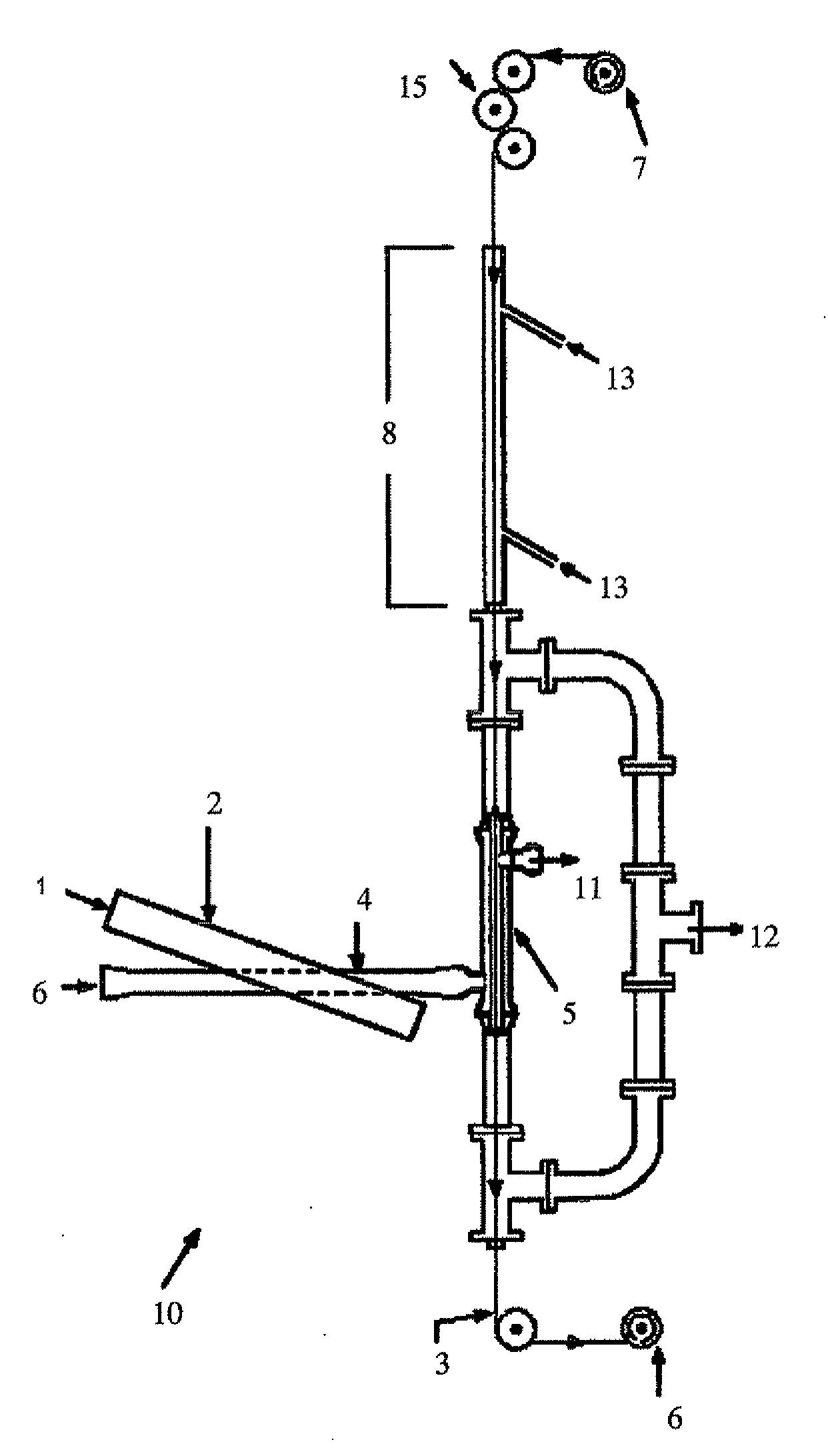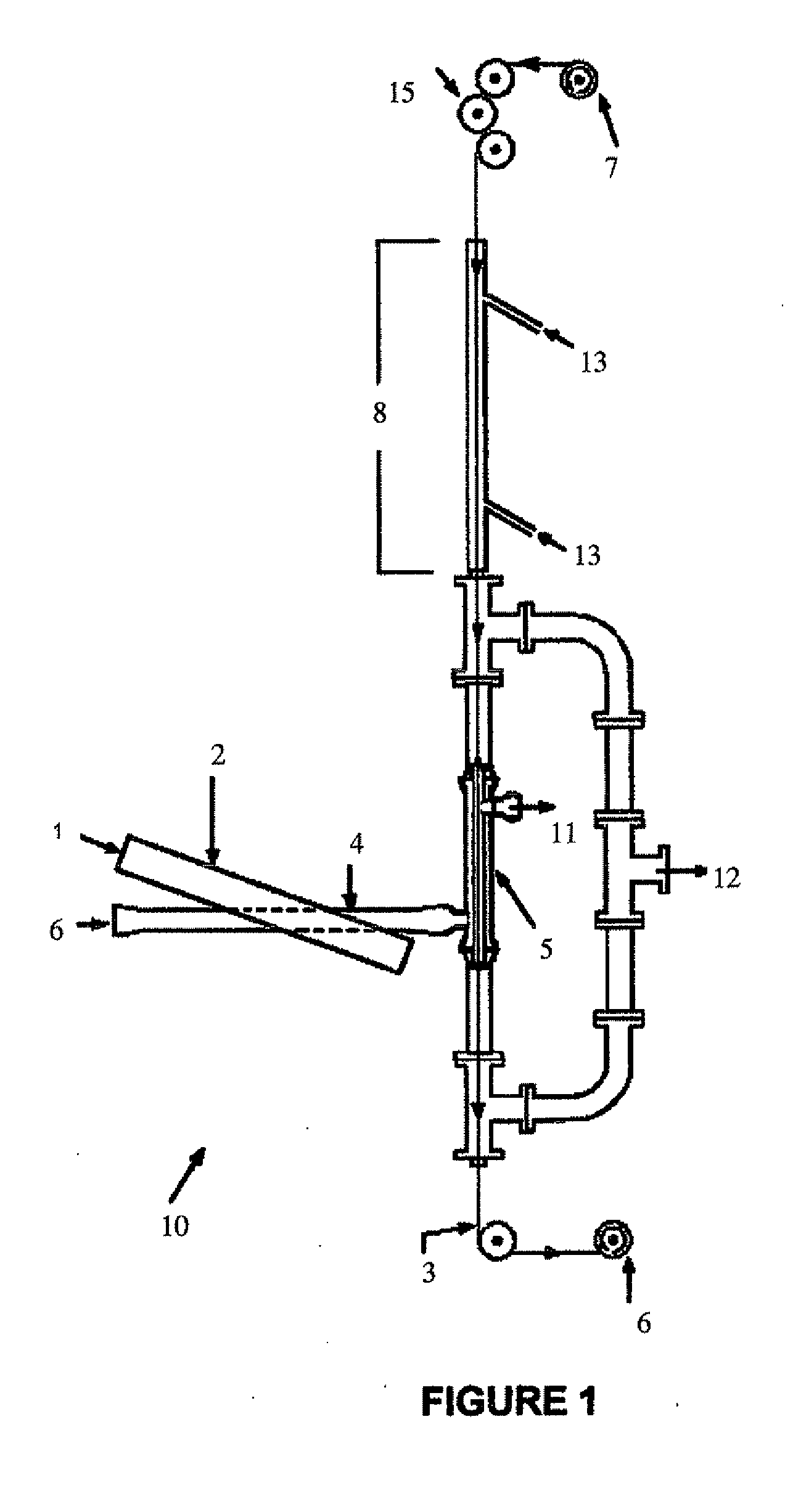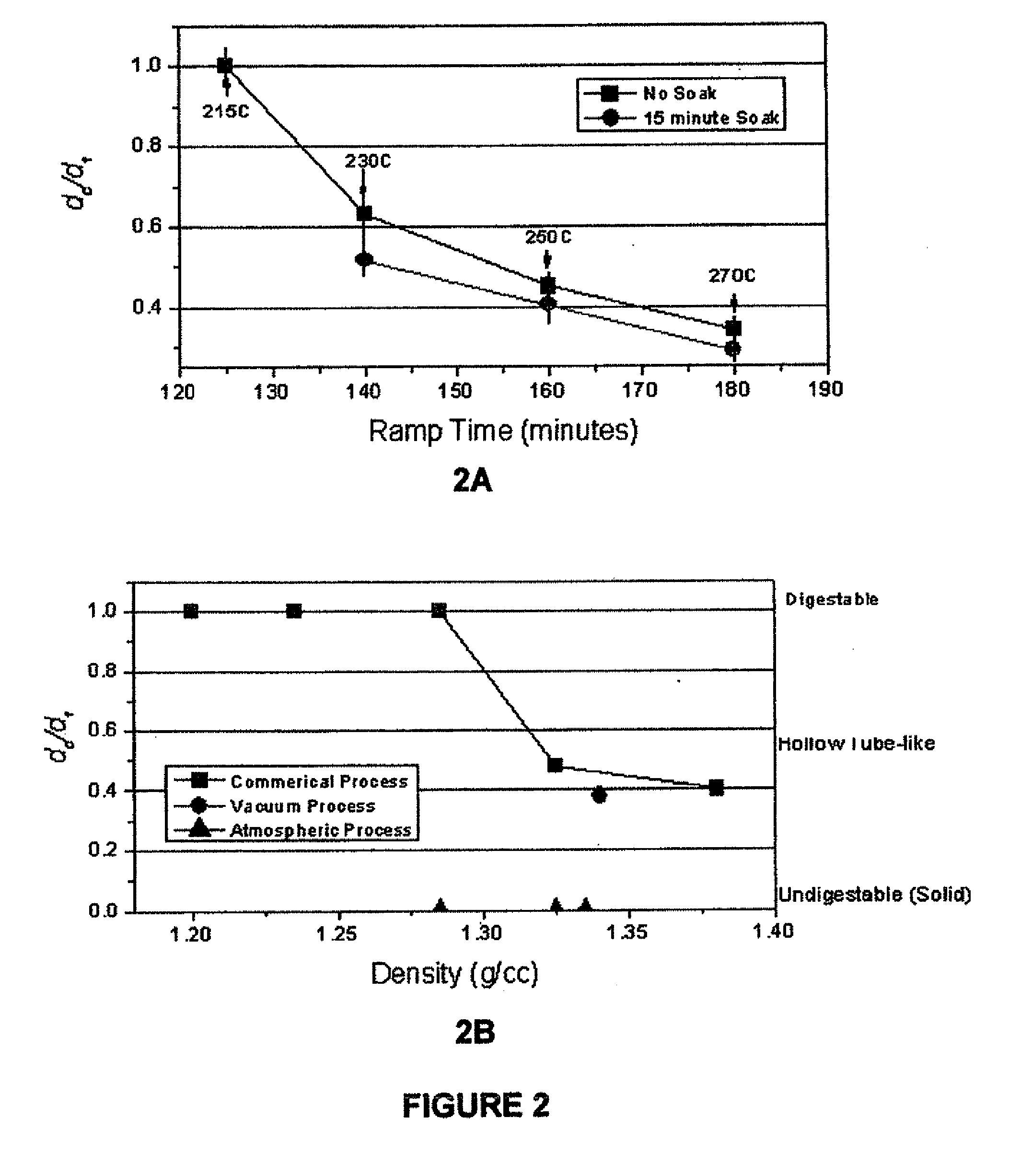Apparatus and method for oxidation and stabilization of polymeric materials
a polymer material and apparatus technology, applied in the direction of chemical vapor deposition coating, granular delivery, energy-based chemical/physical/physico-chemical processes, etc., can solve the problems of limiting the carbonization and graphitization of materials, requiring more space, and the most time-consuming and rate-limiting step of the stabilization processing step, so as to achieve more rapid and cost-effective treatment of pan fibers, oxidation and stabilization of polymeric materials, and less physical spa
- Summary
- Abstract
- Description
- Claims
- Application Information
AI Technical Summary
Benefits of technology
Problems solved by technology
Method used
Image
Examples
example 1
Vacuum Pressure Plasma Processing
[0051]The general setup for vacuum based microwave glow discharge plasma treatment system shown at 10 in FIG. 1 consists of several different interconnected components including a microwave plasma generator 4, an applicator 5, a vacuum system, and a fiber transport system. A microwave generator supplies microwave power at 1 into a shorted waveguide 2 through which a quartz tube passes. The inlet process gases are introduced at 6. These gases, after being ionized by the plasma to form ROS, are fed to the applicator 5, which is a reaction chamber located downstream from the bulk of the plasma volume. This quartz reactor employs conventional connections for vacuum and connections at the other end for the supply of the ROS required for the processing. Several ROS applicators 5 were designed and tested with sequential improvements in the processing capabilities with each new design. The preferred design is illustrated in FIG. 4. The operating inlet gases ...
example 2
Atmospheric Pressure Plasma Processing
[0066]A variety of atmospheric pressure plasma devices have been built during the course of the present research effort. These devices are generally based on the approach taught in U.S. Pat. Nos. 5,387,842 and 5,414,324. These devices have consisted of various parallel electrode designs that have included parallel plates and rods. In these designs either one or both of the electrodes are insulated. The processing gas and PAN fiber was fed through a gap or spacing between the electrodes. The electrodes were energized with an audio frequency power supply and operated in such a manner as to promote a diffuse dielectric barrier type discharge.
[0067]The atmospheric pressure plasma processing equipment consists of a gas supply system, a plasma reactor, and a high voltage power supply as shown in FIG. 3. The gas supply system consists of a gas manifold 39 with connections for up to four different gas bottles 37 (two of which are shown) with independent...
example 3
Variant Atmospheric Plasma Processing Designs and Methods
[0076]There are many possible ways of delivering the ROS from the plasma to the thermoplastic material. These designs can be categorized by either placing the fiber within or outside of the plasma discharge that is either volumetrically generated between two electrodes or a surface discharge such that the plasma is a thin volume of plasma above a surface of dielectric. Those skilled in the art will appreciate that the new process may alternatively be accomplished by placing the polymer in the vicinity immediately outside of the plasma volume as well as within the smaller volume of a surface discharge. The advantage of placement in close proximity but not within a plasma discharge is that the plasma could be operated at even higher energy levels that would otherwise create unacceptable amounts of detrimental etching of the fiber. These higher energy levels would allow for greater concentrations of ROS and promote more rapid oxi...
PUM
| Property | Measurement | Unit |
|---|---|---|
| temperature | aaaaa | aaaaa |
| temperature | aaaaa | aaaaa |
| temperatures | aaaaa | aaaaa |
Abstract
Description
Claims
Application Information
 Login to View More
Login to View More - R&D
- Intellectual Property
- Life Sciences
- Materials
- Tech Scout
- Unparalleled Data Quality
- Higher Quality Content
- 60% Fewer Hallucinations
Browse by: Latest US Patents, China's latest patents, Technical Efficacy Thesaurus, Application Domain, Technology Topic, Popular Technical Reports.
© 2025 PatSnap. All rights reserved.Legal|Privacy policy|Modern Slavery Act Transparency Statement|Sitemap|About US| Contact US: help@patsnap.com



